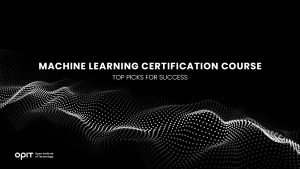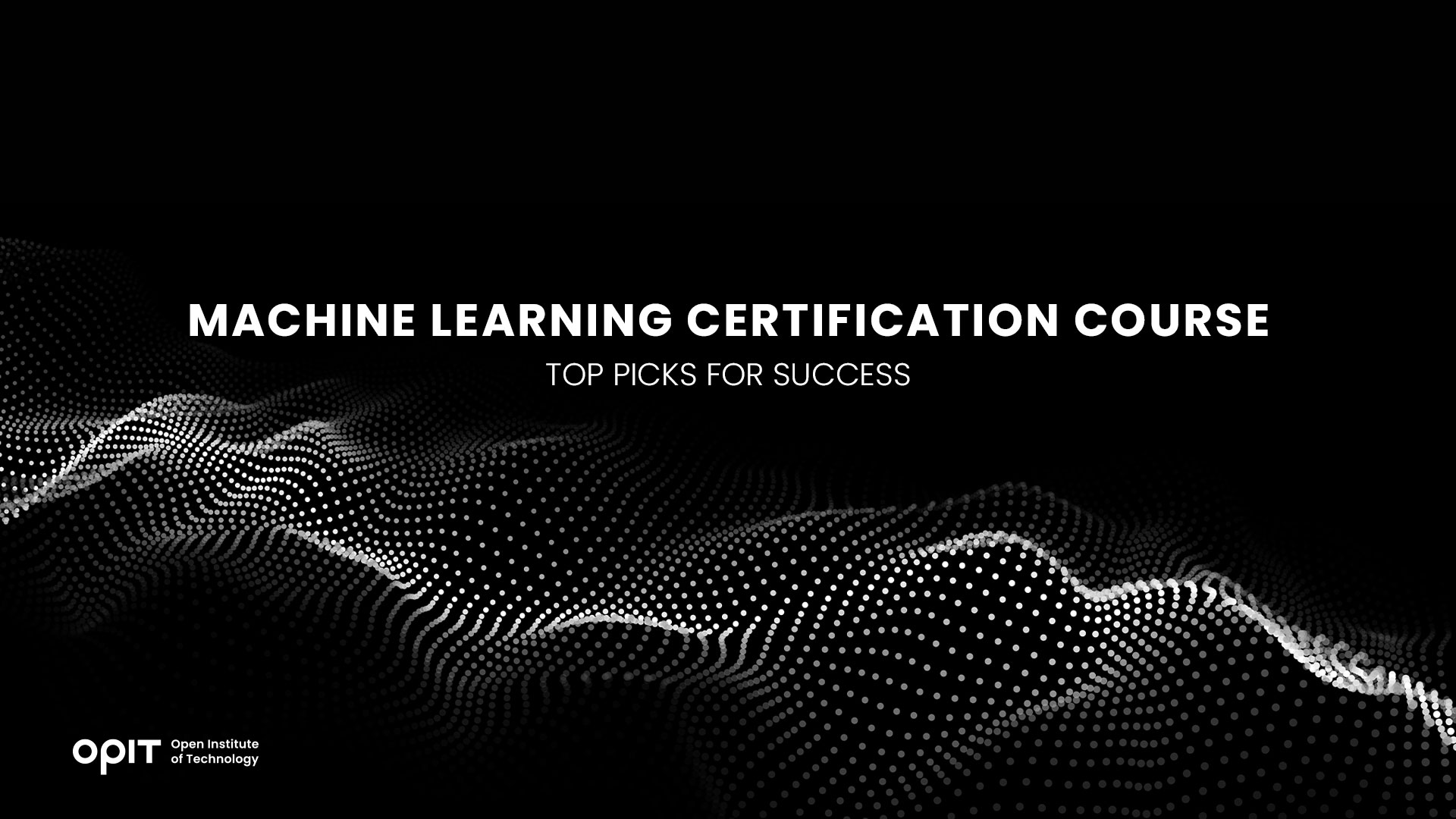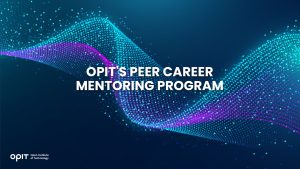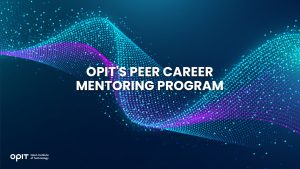

If there’s an adjective that perfectly captures the world today, it’s data-driven. Without machine learning, we could never exploit the full potential of all this data that drives our personal and business decisions.
So, it’s no wonder many people are pursuing a career in machine learning.
To have a real shot at landing your dream job in this field, you must be certified as a data scientist or a machine learning engineer.
That’s where machine learning certification courses come into play.
These courses will help you acquire the necessary knowledge and skills to crush your certification exam and open up a world of possibilities for your future employment.
To help you find the best machine learning certification course, we’ll guide you through the proper selection process. We’ll throw in some tips on making the most out of the selected course for good measure.
If you don’t feel like researching, check out one of our top course picks and start your journey in the booming field of machine learning.
Factors to Consider When Choosing a Machine Learning Certification Course
Unlike machine learning algorithms, you might find it challenging to comb through all the data online and find the perfect machine learning certification course. But allow us to let you in on a little secret – once you know what you’re looking for, you’ll become as efficient as these algorithms.
Course Content and Curriculum
Looking past the title is essential when choosing the most suitable machine learning certification course. The course’s description includes all the good stuff. Here, you’ll find a laid-out curriculum listing all the course topics.
If you’re a beginner, seeing terms like “regression” and “clustering” probably won’t do much for your understanding of the course. But since you’re looking to get certified in the field, you may already have some experience. So, reviewing the course’s curriculum will help you determine whether it has what you need to pass your certification exam.
Course Duration and Flexibility
Online courses are all about flexibility. If you already have a job, you’re probably looking for something self-paced to fit your busy schedule. However, with scheduled courses, you can interact with the instructor directly. So, weigh all your options before making a final decision.
The course’s duration is also an essential factor. A machine learning certification course will likely last longer than a standard crash course, so make sure you can commit fully.
Instructor’s Expertise and Experience
Given the complexity of machine learning, an instructor’s expertise and experience are crucial for genuinely grasping this field’s ins and outs. In a machine learning certification course, these factors become arguably more important since your instructor will be something like a mentor to you during your education journey.
Course Fees and Additional Costs
The internet is a great place to find numerous incredible courses free of charge. If that’s what you’re looking for, you’ll be happy to know there’s no shortage of free machine learning courses. But the bad news is that these courses seldom come with a certificate, let alone a certification.
If you want to complete a machine learning certification course, be prepared to pay a relatively high fee. Think of these costs as an investment in your future.
Certification and Accreditation
Receiving a certificate of completion is relatively simple. You only need to go through all the lessons, turn in exercises, and complete a test or two. Certification, however, is on an entirely different level. A machine learning certification course aims to prepare you for passing a certification exam (which is notoriously hard to do), so choose only courses offered by certified individuals or accredited institutions.
Job Placement and Career Support
Sure, learning for the sake of learning is wonderful. Just think of all the personal growth and betterment it will bring you, and you’ll always want to foster a deep love for knowledge. But in a field as competitive and lucrative as machine learning, learning to enhance your career prospect is more than reasonable. So, before committing to a course, ensure it offers the practical skills and know-how you need to get a job shortly after.
Top Picks for Machine Learning Certification Courses
Check out our top three machine learning certification exams and the courses you must take to prepare for them.
AWS Machine Learning Learning Plan
Earning the AWS Certified Solutions Architect – Associate Certification can do wonders for your career in machine learning. With this certification, you gain valuable expertise in building, training, and deploying machine learning models on AWS (Amazon Web Services). But to pass this challenging certification exam, you’ll need a prep course.
Enter AWS Machine Learning Learning Plan.
This machine learning certification course was built by AWS experts to make you one as well. It’s beginner-friendly and consists of several short courses that eliminate the guesswork of exam prep.
You can take the course at your own pace. Also, you can skip some courses if you already have that area covered. The only downside is that the progress bar can change without your input as the company adds or removes training content, which can throw you off for a while.
Preparing for Google Cloud Certification: Machine Learning Engineer Professional Certificate
The lengthy name of the course gives you all the basic information you need – you’re taking it to prepare for the Google Cloud Certification for a Professional Machine Learning Engineer title.
Since this certification is one of the hardest to obtain in the industry, this course, or a set of courses, will be a lifesaver. It starts slowly, with some cloud basics. Then, it gradually dives deeper, where more complex machine learning solutions await.
During the certification test, you’ll be asked to solve real-world problems using machine learning. But this course teaches you how to do just that. You’ll learn to create and deploy successful machine learning solutions for any challenge that lies ahead.
Some may view the length of this course as a downside. You’ll need around seven months to complete it (at a pace of five hours a week). However, the certification test is rather comprehensive, so the course has no other option than to follow suit.
Machine Learning Cornell Certificate Program
Unlike the options from Google and Amazon, this is an all-in-one course. In other words, the certification exam is a part of it. No machine learning experience is necessary to enroll in this course. Still, familiarity with some basic programming, math, and statistics concepts will do wonders for your progress.
This program aims to equip you with the practical skills to approach real-world problems, select the best machine learning solution, and implement it efficiently. You’ll practice with live data from the get-go, allowing you to get a feel for your future career immediately.
Although the lessons are self-paced, they must be completed in a pre-determined order. Learners with more experience might perceive this as a downside since they will be forced to go through even the familiar concepts again.
Essential Skills for Success in Machine Learning
Sure, a machine learning certification course is an excellent foundation for your career in machine learning. But you’ll need a robust skill set to thrive in this career.
- Programming languages. Machine learning is all about programming, so you won’t get far without knowing and improving programming languages like Python, R, C++, and JavaScript, to name a few.
- Mathematics and statistics. A solid background in mathematics (calculus, linear algebra, probability theory) and statistics (p-value, standard deviation, regression analysis, etc.) will make your job much easier.
- Data preprocessing and visualization. Machines don’t do all the work in machine learning, not even close. You’re the one that needs to preprocess data and ready it for analysis. The same goes for data visualization (using different libraries to spot and understand data patterns).
- Machine learning algorithms and models. As a data scientist, you’ll need to learn about numerous machine learning algorithms (like supervised and unsupervised learning) and models (like classification and regression).
- Model evaluation and optimization. Monitoring and assessing how well a machine learning model performs will be essential to your job. The same goes for optimizing those models that fall short.
- Deployment and maintenance of machine learning models. Knowing how to deploy models successfully and keep them accurate and effective are must-have skills in machine learning.
Tips for Maximizing the Benefits of a Machine Learning Certification Course
Your chosen course can give you all the necessary content to succeed. But only if you interact with it correctly. Here’s how to make the most out of a machine learning certification course:
- Set clear goals and expectations. Carefully consider which skills you can acquire within the course’s timeframe.
- Dedicate time for self-study and practice (ideally, daily).
- Work on real-world projects and build a portfolio. This is the fastest way to demonstrate your skills after completing the course.
- Engage in online forums and communities (within the course, on Reddit or Kaggle).
- Network with professionals in the field at conferences, workshops, and meet-ups.
Cracking the Code to Success
Whether going to tech giants and industry disruptors like Google and Amazon or accredited institutions like Cornell, a machine learning certification course is your one-way ticket to a successful career. After all, machine learning is one of today’s most in-demand fields.
Of course, this certification is only a beginning. What’s next? A fantastic journey of continuous learning, of course. This is the only way to remain in tune with this ever-evolving field.
Related posts

Source:
- Raconteur, published on November 06th, 2025
Many firms have conducted successful Artificial Intelligence (AI) pilot projects, but scaling them across departments and workflows remains a challenge. Inference costs, data silos, talent gaps and poor alignment with business strategy are just some of the issues that leave organisations trapped in pilot purgatory. This inability to scale successful experiments means AI’s potential for improving enterprise efficiency, decision-making and innovation isn’t fully realised. So what’s the solution?
Although it’s not a magic bullet, an AI operating model is really the foundation for scaling pilot projects up to enterprise-wide deployments. Essentially it’s a structured framework that defines how the organisation develops, deploys and governs AI. By bringing together infrastructure, data, people, and governance in a flexible and secure way, it ensures that AI delivers value at scale while remaining ethical and compliant.
“A successful AI proof-of-concept is like building a single race car that can go fast,” says Professor Yu Xiong, chair of business analytics at the UK-based Surrey Business School. “An efficient AI technology operations model, however, is the entire system – the processes, tools, and team structures – for continuously manufacturing, maintaining, and safely operating an entire fleet of cars.”
But while the importance of this framework is clear, how should enterprises establish and embed it?
“It begins with a clear strategy that defines objectives, desired outcomes, and measurable success criteria, such as model performance, bias detection, and regulatory compliance metrics,” says Professor Azadeh Haratiannezhadi, co-founder of generative AI company Taktify and professor of generative AI in cybersecurity at OPIT – the Open Institute of Technology.
Platforms, tools and MLOps pipelines that enable models to be deployed, monitored and scaled in a safe and efficient way are also essential in practical terms.
“Tools and infrastructure must also be selected with transparency, cost, and governance in mind,” says Efrain Ruh, continental chief technology officer for Europe at Digitate. “Crucially, organisations need to continuously monitor the evolving AI landscape and adapt their models to new capabilities and market offerings.”
An open approach
The most effective AI operating models are also founded on openness, interoperability and modularity. Open source platforms and tools provide greater control over data, deployment environments and costs, for example. These characteristics can help enterprises to avoid vendor lock-in, successfully align AI to business culture and values, and embed it safely into cross-department workflows.
“Modularity and platformisation…avoids building isolated ‘silos’ for each project,” explains professor Xiong. “Instead, it provides a shared, reusable ‘AI platform’ that integrates toolchains for data preparation, model training, deployment, monitoring, and retraining. This drastically improves efficiency and reduces the cost of redundant work.”
A strong data strategy is equally vital for ensuring high-quality performance and reducing bias. Ideally, the AI operating model should be cloud and LLM agnostic too.
“This allows organisations to coordinate and orchestrate AI agents from various sources, whether that’s internal or 3rd party,” says Babak Hodjat, global chief technology officer of AI at Cognizant. “The interoperability also means businesses can adopt an agile iterative process for AI projects that is guided by measuring efficiency, productivity, and quality gains, while guaranteeing trust and safety are built into all elements of design and implementation.”
A robust AI operating model should feature clear objectives for compliance, security and data privacy, as well as accountability structures. Richard Corbridge, chief information officer of Segro, advises organisations to: “Start small with well-scoped pilots that solve real pain points, then bake in repeatable patterns, data contracts, test harnesses, explainability checks and rollback plans, so learning can be scaled without multiplying risk. If you don’t codify how models are approved, deployed, monitored and retired, you won’t get past pilot purgatory.”
Of course, technology alone can’t drive successful AI adoption at scale: the right skills and culture are also essential for embedding AI across the enterprise.
“Multidisciplinary teams that combine technical expertise in AI, security, and governance with deep business knowledge create a foundation for sustainable adoption,” says Professor Haratiannezhadi. “Ongoing training ensures staff acquire advanced AI skills while understanding associated risks and responsibilities.”
Ultimately, an AI operating model is the playbook that enables an enterprise to use AI responsibly and effectively at scale. By drawing together governance, technological infrastructure, cultural change and open collaboration, it supports the shift from isolated experiments to the kind of sustainable AI capability that can drive competitive advantage.
In other words, it’s the foundation for turning ambition into reality, and finally escaping pilot purgatory for good.

The Open Institute of Technology (OPIT) is the perfect place for those looking to master the core skills and gain the fundamental knowledge they need to enter the exciting and dynamic environment of the tech industry. While OPIT’s various degrees and courses unlock the doors to numerous careers, students may not know exactly which line of work they wish to enter, or how, exactly, to take the next steps.
That’s why, as well as providing exceptional online education in fields like Responsible AI, Computer Science, and Digital Business, OPIT also offers an array of career-related services, like the Peer Career Mentoring Program. Designed to provide the expert advice and support students need, this program helps students and alumni gain inspiration and insight to map out their future careers.
Introducing the OPIT Peer Career Mentoring Program
As the name implies, OPIT’s Peer Career Mentoring Program is about connecting students and alumni with experienced peers to provide insights, guidance, and mentorship and support their next steps on both a personal and professional level.
It provides a highly supportive and empowering space in which current and former learners can receive career-related advice and guidance, harnessing the rich and varied experiences of the OPIT community to accelerate growth and development.
Meet the Mentors
Plenty of experienced, expert mentors have already signed up to play their part in the Peer Career Mentoring Program at OPIT. They include managers, analysts, researchers, and more, all ready and eager to share the benefits of their experience and their unique perspectives on the tech industry, careers in tech, and the educational experience at OPIT.
Examples include:
- Marco Lorenzi: Having graduated from the MSc in Applied Data Science and AI program at OPIT, Marco has since progressed to a role as a Prompt Engineer at RWS Group and is passionate about supporting younger learners as they take their first steps into the workforce or seek career evolution.
- Antonio Amendolagine: Antonio graduated from the OPIT MSc in Applied Data Science and AI and currently works as a Product Marketing and CRM Manager with MER MEC SpA, focusing on international B2B businesses. Like other mentors in the program, he enjoys helping students feel more confident about achieving their future aims.
- Asya Mantovani: Asya took the MSc in Responsible AI program at OPIT before taking the next steps in her career as a Software Engineer with Accenture, one of the largest IT companies in the world, and a trusted partner of the institute. With a firm belief in knowledge-sharing and mutual support, she’s eager to help students progress and succeed.
The Value of the Peer Mentoring Program
The OPIT Peer Career Mentoring Program is an invaluable source of support, inspiration, motivation, and guidance for the many students and graduates of OPIT who feel the need for a helping hand or guiding light to help them find the way or make the right decisions moving forward. It’s a program built around the sharing of wisdom, skills, and insights, designed to empower all who take part.
Every student is different. Some have very clear, fixed, and firm objectives in mind for their futures. Others may have a slightly more vague outline of where they want to go and what they want to do. Others live more in the moment, focusing purely on the here and now, but not thinking too far ahead. All of these different types of people may need guidance and support from time to time, and peer mentoring provides that.
This program is also just one of many ways in which OPIT bridges the gaps between learners around the world, creating a whole community of students and educators, linked together by their shared passions for technology and development. So, even though you may study remotely at OPIT, you never need to feel alone or isolated from your peers.
Additional Career Services Offered by OPIT
The Peer Career Mentoring Program is just one part of the larger array of career services that students enjoy at the Open Institute of Technology.
- Career Coaching and Support: Students can schedule one-to-one sessions with the institute’s experts to receive insightful feedback, flexibly customized to their exact needs and situation. They can request resume audits, hone their interview skills, and develop action plans for the future, all with the help of experienced, expert coaches.
- Resource Hub: Maybe you need help differentiating between various career paths, or seeing where your degree might take you. Or you need a bit of assistance in handling the challenges of the job-hunting process. Either way, the OPIT Resource Hub contains the in-depth guides you need to get ahead and gain practical skills to confidently move forward.
- Career Events: Regularly, OPIT hosts online career event sessions with industry experts and leaders as guest speakers about the topics that most interest today’s tech students and graduates. You can join workshops to sharpen your skills and become a better prospect in the job market, or just listen to the lessons and insights of the pros.
- Internship Opportunities: There are few better ways to begin your professional journey than an internship at a top-tier company. OPIT unlocks the doors to numerous internship roles with trusted institute partners, as well as additional professional and project opportunities where you can get hands-on work experience at a high level.
In addition to the above, OPIT also teams up with an array of leading organizations around the world, including some of the biggest names, including AWS, Accenture, and Hype. Through this network of trust, OPIT facilitates students’ steps into the world of work.
Start Your Study Journey Today
As well as the Peer Career Mentoring Program, OPIT provides numerous other exciting advantages for those who enroll, including progressive assessments, round-the-clock support, affordable rates, and a team of international professors from top universities with real-world experience in technology. In short, it’s the perfect place to push forward and get the knowledge you need to succeed.
So, if you’re eager to become a tech leader of tomorrow, learn more about OPIT today.
Have questions?
Visit our FAQ page or get in touch with us!
Write us at +39 335 576 0263
Get in touch at hello@opit.com
Talk to one of our Study Advisors
We are international
We can speak in:


